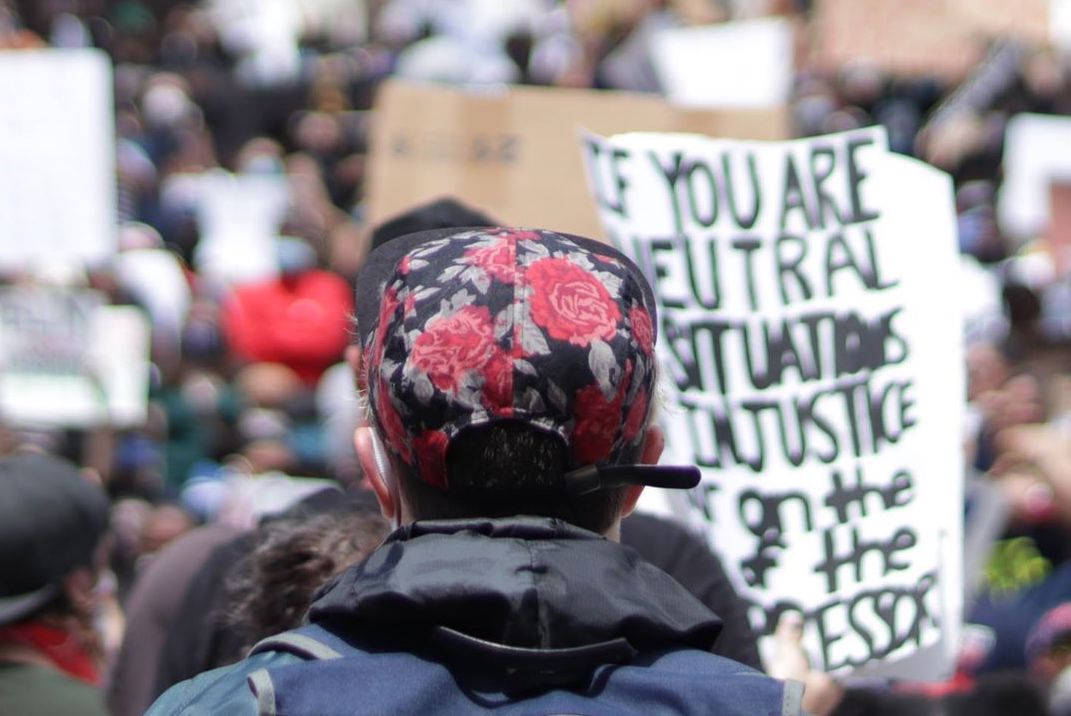“Race and racism is a reality that so many of us grow up learning to just deal with. It’s up to all of us—Black, white, everyone—no matter how well-meaning we think we might be, to do the honest, uncomfortable work of rooting it out.”
—Michelle Obama
In this special issue of Give Me Five, we’re talking about how you can show up for your students when it comes to racism and systemic injustices.
WATCH: TEACHING STUDENTS ABOUT SYSTEMIC INJUSTICES
The Netflix series “When They See Us” is a true story about five teenagers falsely accused of brutally attacking a woman in Central Park. And now, you can use the series as a learning tool in your classroom.
Why it matters: This series was created to serve as a catalyst for conversation and change. And we can’t fix a broken system without first understanding what’s wrong with it. Array 101’s learning companion and field study help students:
✅ Explore systemic injustice
✅ Reflect on individual, institutional, and systemic practices
✅ Take action to change themselves, institutions, and systems
Extra credit: Download the “When They See Us” learning companion and field study.
TRY: TALKING ABOUT RACE AND RACISM WITH STUDENTS
Talking about race and racism can be uncomfortable, but that shouldn’t stop anyone from trying.
Why it matters: Educators play a crucial role in helping students talk about difficult topics openly and honestly. Talking about topics like white privilege, police violence, and economic inequality encourages meaningful dialogue and helps students explore solutions. Teaching Tolerance shares strategies for facilitating these conversations:
✅ Check in with students nonverbally to gauge comfort levels
✅ Help students navigate the emotions that come with these conversations
✅ Set aside time to debrief and decompress
Extra credit: Reflect on your comfort levels and find out how to apply these strategies.
ACT: WHAT YOU CAN DO TO TAKE ACTION AND EFFECT CHANGE
As Nia Ariel Davis Signona shares in a powerful EdSurge piece: To me, it is profoundly telling that every anti-racism action list includes some variation of “educate yourself.” What better way to challenge systems of power?
Why it matters: Although changing the education system so that ALL students succeed won’t erase generations of trauma against black people, it’s an important step toward justice and progress. Here’s advice from Signona about what you can do to create the change you want to see in education:
✅ Seek first to listen, without interrupting
✅ Support people already doing the work
✅ Keep asking yourself, “What can I do next?”
✅ Make choices you find conscionable, not just convenient or comfortable
Extra credit: Read Signona’s heartfelt response after being asked “What do you need?”
PLAN: SUPPORTING STUDENTS WHEN SCHOOLS REOPEN
When schools reopen, educators will need to protect both the physical and mental health of students. It will be important to start by addressing the experiences students endured over the last few months.
Why it matters: Months (and for some, a lifetime) of trauma and stress, compounded with weeks in isolation, can be debilitating for students. Here are strategies from EdSource you can use now and when planning to reopen:
✅ Provide opportunities for students to speak out and be heard
✅ Offer students emotional support and greet them with understanding
✅ Identify students who need help or are having difficulty adjusting
✅ Make mental health a primary planning focus
Extra credit: Learn more about what to expect from students and how you can help.
LISTEN: A MESSAGE FROM THE NATIONAL TEACHER OF THE YEAR
Educators have the power to change the future because they are the people teaching our future leaders. That’s why it’s so important to ask yourself if you’re part of the problem.
Why it matters: As Rodney Robinson explains, the term “systemic racism” is often used to generalize the problems that come with being Black in America. In order to incite change, we must first address the causes of systemic racism. Rodney share tips about what you can do:
✅ Identify your implicit biases and prejudices
✅ Challenge those who vocalize racist ideas
✅ Acknowledge and understand our country’s history of oppression
Extra credit: See the NTOY’s full message and recommended anti-racist reading.
XQ X-tra: We’re Smarter Together
One of the ways you can take action is by talking about systemic racism and sharing resources on the Rethink Together Forum, a community of nearly 3,000 educators, students, and families.
✅ See how other schools are addressing equity in new ways
✅ Browse anti-racist reading recommendations and resources
✅ Explore educator resources on how to respond to racial inequity
✅ Review the data of systemic injustices in our education system
#RethinkHighSchool together with us.
Become a member of the Rethink Together Forum.







